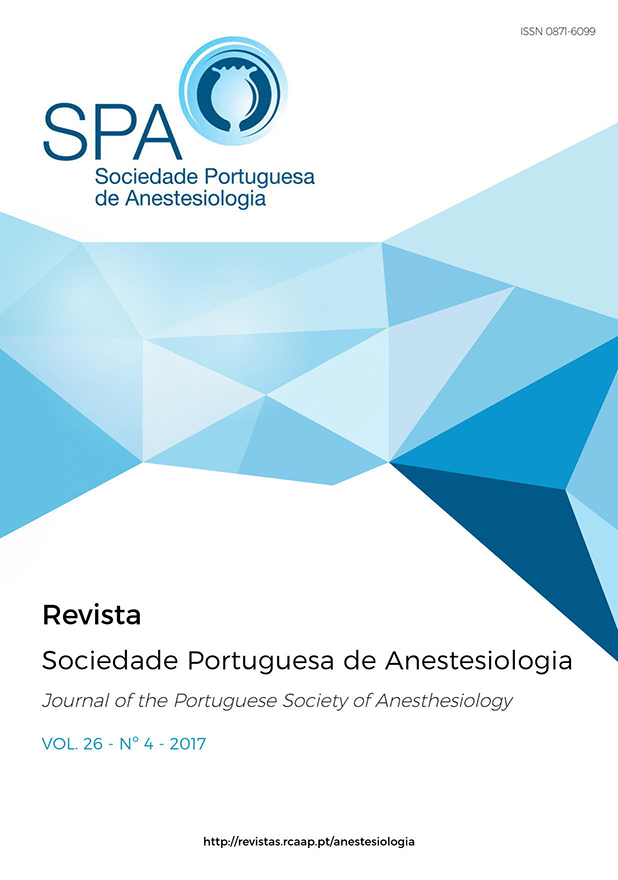Analgesic Management of Pectus Excavatum repair in children: a single center experience
DOI:
https://doi.org/10.25751/rspa.12662Palavras-chave:
Pectus excavatum, Epidural analgesia, Analgesic effectiveness.Resumo
Background: The Nuss procedure has gained acceptance as a safe technique for pectus excavatum repair. Despite being minimally invasive, this procedure is associated with severe postoperative pain. The aim of the study was to evaluate the efficacy of our perioperative pain control strategies and related complications.
Methods: Patients submitted to the Nuss procedure from January 2007 to December 2015 were retrospectively analyzed. Patient’s clinical files were reviewed and the following data was collected: demographic and preoperative auxiliary diagnostic tests, anesthetic and surgical features, pain management, analgesic effectiveness (Visual Analogue Scale - VAS) and related complications.
Results: Combined general + epidural anesthesia was performed in 144 patients (98,6%). The T10-T11 epidural space was accessed in 51,4%. Epidural catheter was placed into the epidural space 5 cm (±SD 0,73). The local anesthetic more frequently used was ropivacaine 0,2% (55,5%). Epidural opioids were also used in 74 patients (51,4%). Local anesthetic epidural infusion was initiated 62min (± SD 23,1) after the initial bolus. The analgesia was good or excellent (VAS<5) in 135 patients (93,8%) on the day of epidural catheter´s removal. Analgesia-related complications on patients under epidural analgesia occurred in 40 patients (27,8%): postoperative nausea and vomiting (50%), pruritus (37,5%), hypotension (5%), urinary retention (5%) and Horner syndrome (2,5%).
Discussion/Conclusions: Epidural thoracic analgesia, according to the current literature, is the most effective technique for postoperative pain control in patients undergoing Nuss procedure. We confirm the effectiveness of our pain control strategies with low severity complications and no impact on the postoperative course.
Downloads
Ficheiros Adicionais
Publicado
Como Citar
Edição
Secção
Licença
Os artigos estão livremente disponíveis para serem lidos, descarregados e partilhados a partir do momento da sua publicação.
A RSPA reserva-se o direito de comercialização do artigo enquanto parte integrante da revista (na elaboração de separatas, por exemplo). O autor deverá acompanhar a carta de submissão com a declaração de cedência de direitos de autor para fins comerciais.
Relativamente à utilização por terceiros a Revista da SPA rege-se pelos termos da licença Creative Commons “Atribuição – uso Não-Comercial (CC BY-NC).
Após publicação na RSPA, os autores ficam autorizados a disponibilizar os seus artigos em repositórios das suas instituições de origem, desde que mencionem sempre onde foram publicados.


